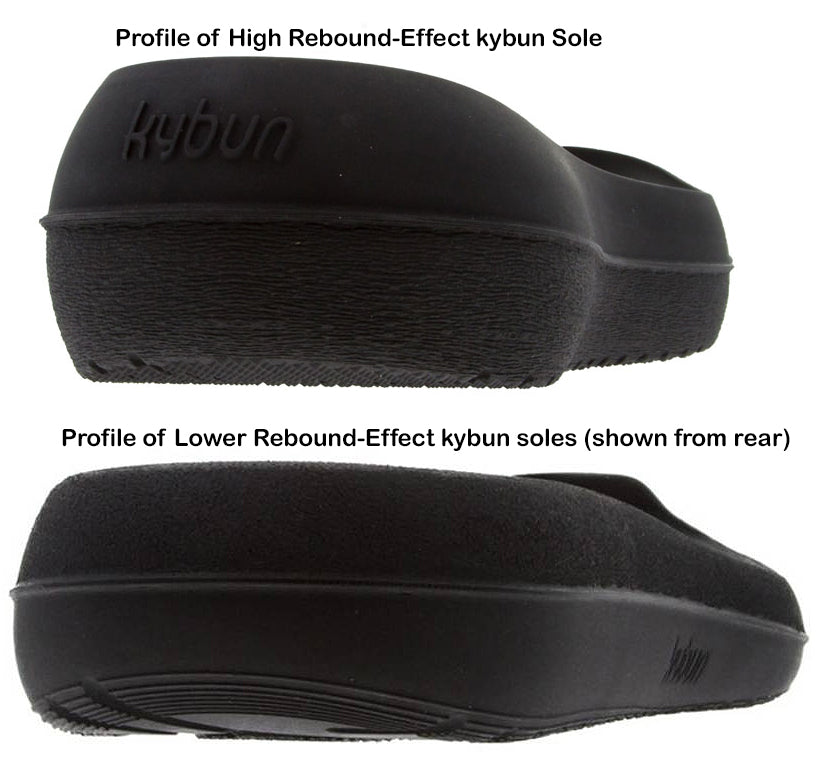About the kybun Cirrus and Tropo Soles: Even More Comfortable to Wear
Few of us own just one pair of outdoor shoes, no matter how comfortable we find them we tend to have at least one pair for work, another for more formal occasions, maybe one for hot summer days, another for hiking, and one for athletic or recreational activities. And while there were plenty of offerings in all those initial categories among the therapeutic kybun shoes during their first few years of production, it wasn't until the launch of the new Cirrus sole in early 2017 that we could also get one we could actually wear to go running or playing recreational sports in.
The Cirrus sole and its new successor, the Tropo, both still have a springy 'walk on air' effect produced by a honeycomb structure which creates an air cushion between the feet and ground -- but less so, by design, with a much lower profile.

In addition to having less of a 'Rebound-Effect' due to that different profile, they also have less of a rolling action than the original Comfort Soles (now known as the Nimbus), which some people need a period of adjustment to become accustomed to), so most find they can walk perfectly normally in a kybun shoe with a Cirrus sole right away.

Because they only have about 70% of the air-cushioning found in the Nimbus sole, all the shoes with a Cirrus or a Tropo sole also come with a removable insole to provide additional cushioning (which might be particularly important for people suffering from heel pain, for example.)
The Cirrus and Tropo soles also have a different tread pattern (shown here) than both the original wider Nimbus and the next generation of Slim Foot or Stratus soles. This new tread pattern is quite well-suited for squeaky floors like gym floors or linoleum.
The Cirrus and Tropo soles currently appear in several models of sporty shoes which may appeal to several types of consumers:
- those who are on their feet a lot and are beginning to develop heel pain or other problems, but still want to have a 'normal' looking sole
- those who find the other types of kybun soles challenging to wear (which some people take to right away, while others take some time to adjust)
- those with extreme balancing issues or certain other conditions who may be unlikely to adapt to regular kybun shoes
- those who want to occasionally engage in some purely recreational sports such as tennis or volleyball (perhaps when pressed into it at family events!) and want some help to keep it pain-free
- those who want some of the established kybun air-cushioning effects for walking and standing but anticipate having to run in them occasionally (to catch a bus, e.g.) or,
- those who realize they are not exercising as much as they should or who notice their muscle tone beginning to slip and wish to benefit from a shoe which helps improve circulation and keep them more active even if they're mostly just standing.

Please note, these lower-profile soles (both the Cirrus and the new Tropo) also differ from the thicker Nimbus and Stratus soles in not having a series of air cylinders drilled through them to release jets of air through the insole to the bottoms of your feet as you step down. However, the sporty shoes with the lower-rebound effect soles still have plenty of ventilation because they have mesh in their uppers rather than solid leather.
